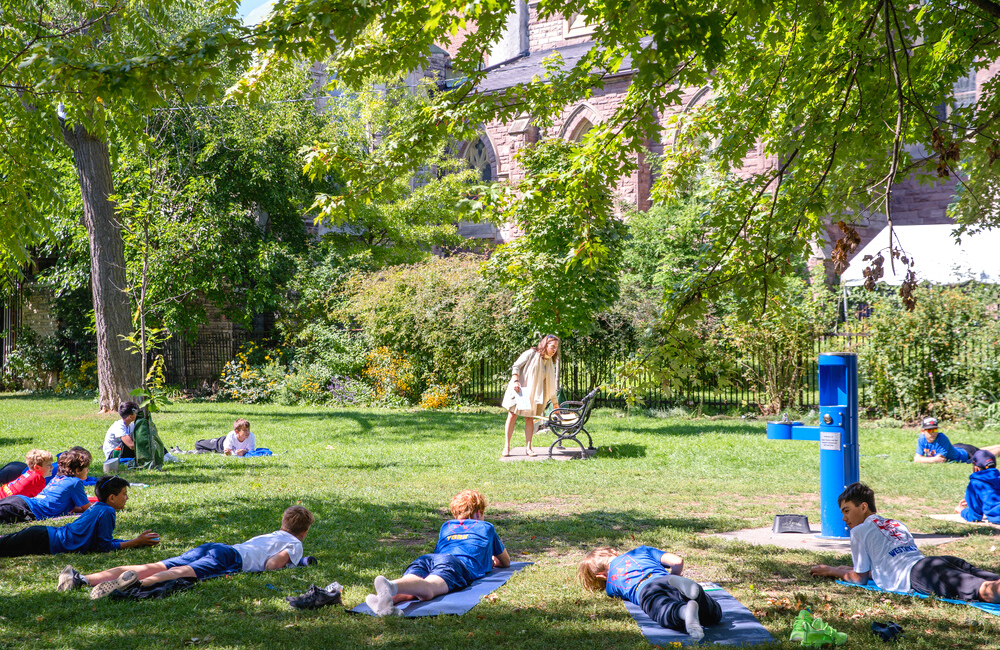Following lockdowns, now might be a good time to consider taking your lessons outside
 The return to school in term 4 will be welcomed by many, given that Victorians have endured the longest lockdown in the world and a relentless remote learning period. With lockdown fatigue at its pinnacle, the spring air, easing of restrictions and a planned staged return to school here in Victoria is a breath of fresh air (we hope) for many. For those who may not have endured the metropolitan Melbourne lockdown, we know that everyone has faced the trials and tribulations of remote learning.
The return to school in term 4 will be welcomed by many, given that Victorians have endured the longest lockdown in the world and a relentless remote learning period. With lockdown fatigue at its pinnacle, the spring air, easing of restrictions and a planned staged return to school here in Victoria is a breath of fresh air (we hope) for many. For those who may not have endured the metropolitan Melbourne lockdown, we know that everyone has faced the trials and tribulations of remote learning.
An article in The Conversation UK (2019) titled ‘Outdoor learning has huge benefits for children and teachers – so why isn’t it used more in schools?’ poses a great question. Recently, our reliance on technology screens and increased sedentary time has replaced our daily routines filled with social interactions and movement opportunities (recess and lunch time) whilst learning. Thankfully it is becoming ‘safer’ to be outdoors due to ventilation and social distancing. Now is a great opportunity to connect with the outdoors and move the classrooms outside.
The article highlights those students engaging in outdoor learning felt more engaged, more able to express themselves, report better well-being and memory, coupled with teachers feeling it helped engage all learners and enhanced their job satisfaction. Furthermore ‘numerous studies have shown outdoor learning helps students stress less, focus more and improve their overall wellbeing’ (Outside).
With this in mind, it might be time to more seriously consider implementing outdoor learning into your HPE program and reap the mental and physical wellbeing benefits and spread some extra joy to the last term of the school year.
What is outdoor learning?
Outdoor learning, as defined by the Australian Curriculum, ‘engages students in practical and active learning experiences in natural environments and settings… typically …occurring beyond the school classroom. In these environments, students develop the skills and understandings to move safely and competently, while valuing a positive relationship with natural environments and promoting the sustainable use of these environments.’ (ACARA).
Aligned with the Australian Professional Standards for Teachers (AITSL), outdoor learning encourages teachers to explore know students and how they learn (Standard 1), know the content and how to teach it (Standard 2) and create and maintain supportive and safe learning environments (Standard 4).
Why outdoor learning is important
Within Health and Physical Education (HPE), there are many aspects of our current teaching and learning programs facilitated outdoors (e.g., team sports, physical activity, athletics, carnivals etc), but it is important to note that outdoor learning specifically focuses on valuing positive relationships with the natural environment. This extends to experiencing safe journeys in nature, managing personal risks, the development of an adventurous spirit and deepening the human-nature relationships.
Such experiences may not only be the basis for promoting ongoing outdoor recreation opportunities and lifelong physical activity but, the opportunity to facilitate personal and social capabilities such as resilience, teamwork, communication, personal autonomy and initiative.
Last year, we wrote about the many benefits of outdoor learning for both students and teachers. Some of these can include:
- Better mental health
- Decreased stress levels,
- Improved grades – some research indicates attendance improves and cognitive abilities are better developed outdoors than indoors
- Increased motivation
- Positive attitudes to the environment
- Better overall behaviour
- Increase in outdoor skills
- Improved memory
- Improved physical capability
- Appropriate risk taking in the outdoors
With students experiencing many challenges over the past lockdown period, the change in learning environment and teaching activities included to reflect a more outdoor learning approach could bring significant benefits to students and staff.
Application
Outdoor learning toolkits available through Outdoors Victoria provide links to research, guidance and resources for developing and launching an outdoor learning program. The toolkits have been released to assist teachers in schools as well as home learning. Current toolkits focus on F-6 across different subject areas, including Physical Education and Health Education. Each resource’s set of activities are curriculum linked to a range of areas. 2022 will see the release of some secondary toolkits.
Outdoors Victoria advocates and supports outdoor learning as an important method of teaching, from the early years right through to tertiary level. Coupled with the extensive benefits of outdoor learning and our current restricted learning environments, now is an ideal opportunity to trial taking learning further beyond the walls of the classroom and foster connections with students, communities and nature.
If you’d like some guidance to get you started with outdoor learning or are proud of a program you’ve already implemented, please get in touch.